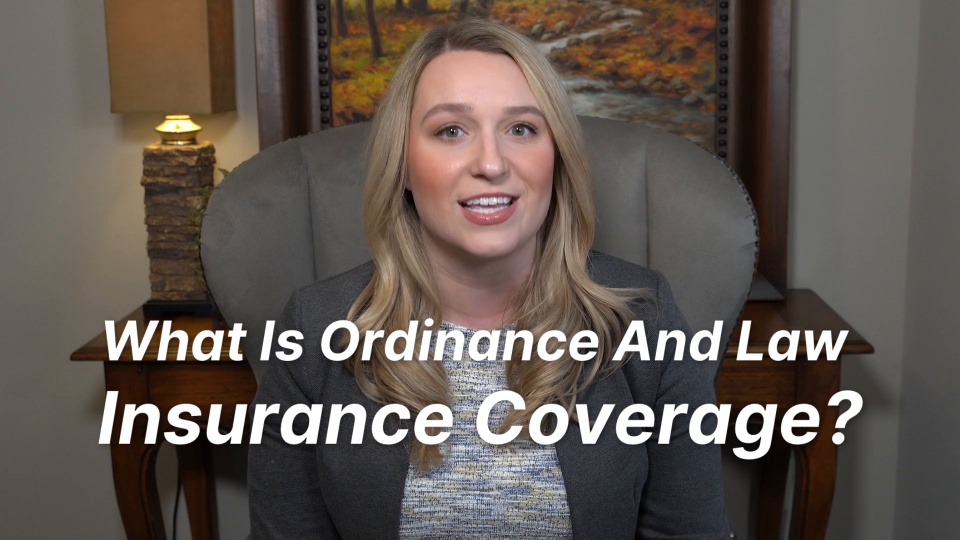Ordinance of Law Insurance Coverage in 2024: What You Need to Know

Introduction
Ordinance of Law Insurance Coverage in 2024, In the realm of protection, Ordinance of Regulation coverage is a significant, yet frequently disregarded, type of protection that safeguards land owners from monetary misfortune because of the implementation of building regulations and guidelines after a misfortune or harm. In 2024, this inclusion keeps on being fundamental for both business and private land owners, especially considering advancing building regulations, ecological principles, and wellbeing guidelines. Here is a thorough gander at what Statute of Regulation protection is, the reason it’s vital, and the way that it works in 2024.
What is Mandate of Regulation Protection?
Statute of Regulation insurance (in some cases alluded to as Law and Law Coverage) is an arrangement in property insurance contracts that takes care of the costs caused while a structure should be raised to code following harm or obliteration. Much of the time, when a property is harmed, the revamping or fix process is likely to refreshed nearby building regulations or statutes that might not have been active when the property was initially developed. Ordinance of Law Insurance Coverage in 2024.
For what reason is Mandate of Regulation Inclusion Significant?
Neighborhood legislatures frequently require land owners to consent to refreshed construction standards and mandates, particularly following critical harm brought about by a guaranteed occasion, like a fire, flood, or quake. These new construction laws can include exorbitant updates that were not piece of the first plan of the property. For instance, present day construction regulations might require:
- Seismic retrofitting: Tremor sealing for more seasoned structures.
- Heat proof materials: Supplanting combustible materials with flame resistant other options.
- Energy proficiency upgrades: Introducing protection or energy-productive windows.
- Openness improvements: Adding slopes or lifts to make structures ADA-consistent.
Without Statute of Regulation inclusion, the land owner would be liable for these extra costs from cash on hand. This inclusion helps overcome any issues between the payout from a protection guarantee (which may just take care of the expense of fixes to the structure as it was initially developed) and the expense of following new guidelines.
What Does Mandate of Regulation Inclusion Incorporate?
In 2024, Law of Regulation inclusion normally incorporates three unmistakable parts:
- Coverage A – Inclusion for the Flawless Part of the Property:
This piece of the inclusion helps pay for the expense of revamping or fixing the whole part of the property in consistence with current construction laws. For instance, in the event that a fire obliterates part of a structure, yet the excess design should be raised to code, this inclusion helps pay for the important upgrades. Ordinance of Law Insurance Coverage in 2024. - Coverage B – Destruction Coverage:
This piece takes care of the expense of wrecking the whole part of the property to clear a path for fixes or reconstructing. At the point when a property is harmed, neighborhood construction regulations might require the whole design to be destroyed, regardless of whether just piece of it was impacted by the occasion. Destruction can be exorbitant, and Law of Regulation protection guarantees that these costs are covered. - Coverage C – Inflated Cost of Development (ICC):
This gives inclusion to the extra expense of revamping or fixing the property to meet current construction regulations. These expenses can incorporate overhauling frameworks like electrical wiring, plumbing, or air conditioning to agree with present day norms. This inclusion is particularly significant in regions where construction regulations have changed fundamentally over the long run.
How Statute of Regulation Protection Functions By and by
We should consider a situation to comprehend how Mandate of Regulation inclusion functions by and by:
Scenario: A fire seriously harms a more seasoned business constructing that was worked before ebb and flow building regulations required seismic retrofitting. The fire causes sufficient harm that the structure is viewed as a complete misfortune, yet nearby construction regulations expect that the structure be remade with retrofitting for seismic tremor security. The expense of revamping the construction as indicated by present day codes could essentially surpass how much the protection guarantee, which just takes care of the expense of reconstructing the design as it was before the fire.
Without Mandate of Regulation inclusion, the land owner would be answerable for paying personal to meet the new necessities. In any case, with this inclusion set up, the insurance contract would take care of the extra expenses related with meeting flow codes — whether that implies redesigning the electrical framework, adding seismic fortifications, or supplanting obsolete structure materials.
Mandate of Regulation Protection in 2024: Key Patterns and Updates
While the basics of Mandate of Regulation inclusion continue as before, a few variables in 2024 have molded its pertinence and significance:
- Stricter Construction standards and Regulations:
Throughout the last ten years, construction laws have become more severe, especially regarding natural worries, energy proficiency, and debacle strength. These progressions are frequently intended to work on the wellbeing and supportability of structures. Accordingly, Mandate of Regulation inclusion has become more important, as land owners face the increasing expenses of updating their structures to consent to these advancing codes. - Climate Change and Flexibility Requirements:
Because of the rising recurrence of cataclysmic events (rapidly spreading fires, typhoons, floods, and so forth), numerous nearby states have authorized harder construction standards focused on calamity flexibility. Properties in high-risk regions, like seaside zones or fierce blaze inclined areas, might be likely to new codes that command built up structures, flood-sealing, and heat proof materials. Mandate of Regulation inclusion is critical in guaranteeing land owners can manage the cost of these updates. - More Extensive Policies:
In 2024, insurance agency are offering more extensive Law of Regulation inclusion as a component of standard property protection bundles. Already, this inclusion was an extra or rider that land owners could select into. In any case, given the rising intricacy of building regulations and the increasing expense of reconstructing, numerous safety net providers have made it a standard component in their business and private strategies. - Technology-Driven Compliance:
As urban communities and regions keep on taking on trend setting innovations for checking and upholding construction standards, Law of Regulation protection will probably advance to address new mechanical necessities. For instance, building proprietors might be expected to introduce progressed security frameworks, robotized lighting, or shrewd warming and cooling frameworks to fulfill refreshed wellbeing guidelines. In these cases, Statute of Regulation inclusion can assist with counterbalancing the extra expenses of executing these cutting edge arrangements. - Increased Consciousness of Inclusion Needs:
In 2024, land owners are turning out to be more mindful of the significance of Law of Regulation inclusion. Expanded media inclusion of cataclysmic events and the developing familiarity with natural dangers have provoked land owners to reevaluate their protection needs. Thus, more organizations and property holders are adding this inclusion to their strategies to stay away from expected monetary strain after a misfortune.
What isn’t Covered by Statute of Regulation Protection?
While Statute of Regulation inclusion is important, it doesn’t cover each conceivable situation. It by and large doesn’t cover:
- Updates not needed by law: For instance, on the off chance that the neighborhood government doesn’t command explicit redesigns (like energy-effective windows or extra wellbeing highlights), those expenses wouldn’t be covered.
- Support or fix costs: Expenses for routine upkeep, mileage, or harm because of disregard are normally not covered.
- Loss of business income: In the event that your business is intruded on because of harm or the requirement for redesigns, this is commonly covered under a different business interference insurance contract, not under Law of Regulation inclusion.
Step by step instructions to Add Mandate of Regulation Inclusion to Your Approach
Assuming you’re a land owner, the most ideal way to guarantee that you have sufficient Mandate of Regulation inclusion is to talk with your protection specialist. This inclusion is accessible as a rider or support to a property insurance contract, however the specific terms and cutoff points can change broadly by back up plan and ward. It’s likewise critical to survey your nearby construction standards and laws to comprehend what they might mean for your property in case of a case.
End
Statute of Regulation protection inclusion assumes an essential part in shielding land owners from unforeseen expenses related with conforming to new construction standards and laws observing harm. In 2024, as construction standards become more severe and catastrophic events more successive, having this inclusion is progressively essential for both private and business land owners. While the inclusion doesn’t come without its limits, it can give truly necessary monetary security in reality as we know it where development principles are continually advancing. By understanding the subtleties of Law of Regulation inclusion and adding it to your insurance contract, you can all the more likely shield your property against the monetary effect of revamping in consistence with current regulations.
We Love Cricket

